Abstract
1. In guinea-pigs fed an ascorbic-acid-free diet, as the ascorbic acid levels decreased the histamine levels in blood and urine rose steadily to maxima in about 10-12 days. The elevated histamine levels persisted in the blood and urine of scorbutic guinea-pigs and the histamine levels in lung, gastric mucosa and spleen also increased. The increased histamine content of the urine, blood and other tissues in the ascorbic-acid-depleted condition could be brought back to normal levels by administration of a single dose of ascorbic acid 5 mg/100 g body wt. guinea-pig. 3. The drop in the elevated histamine level was not due to an indirect effect of ascorbic acid on histamine forming capacity, histaminase activity or histamine release.
Full text
PDF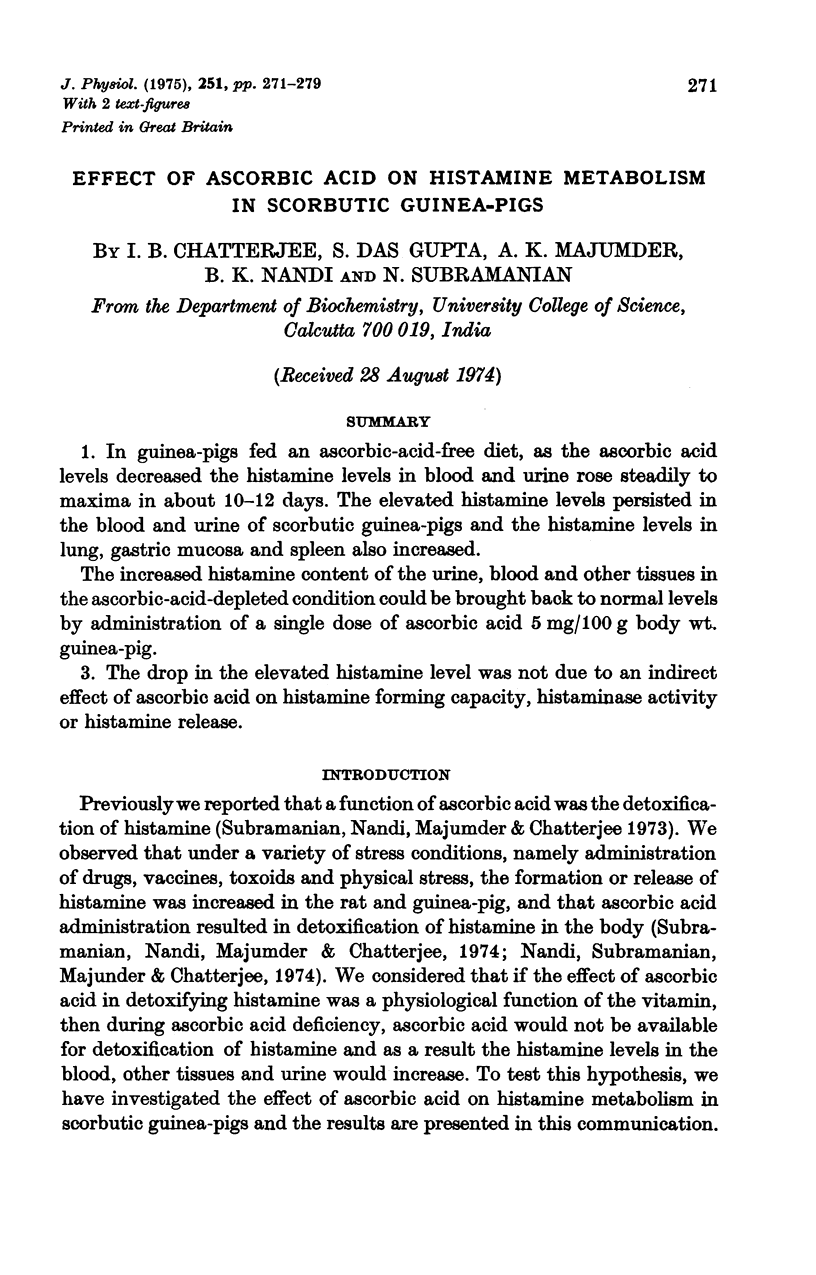

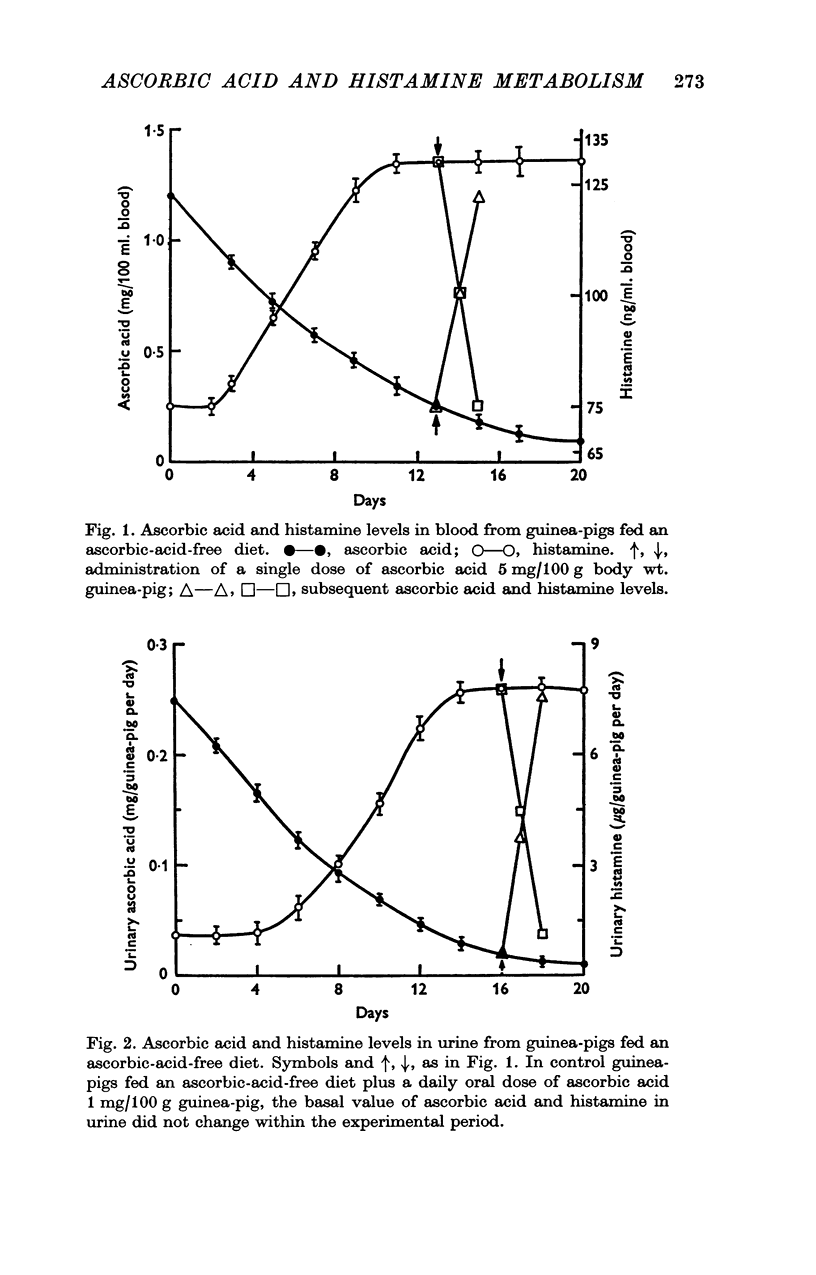
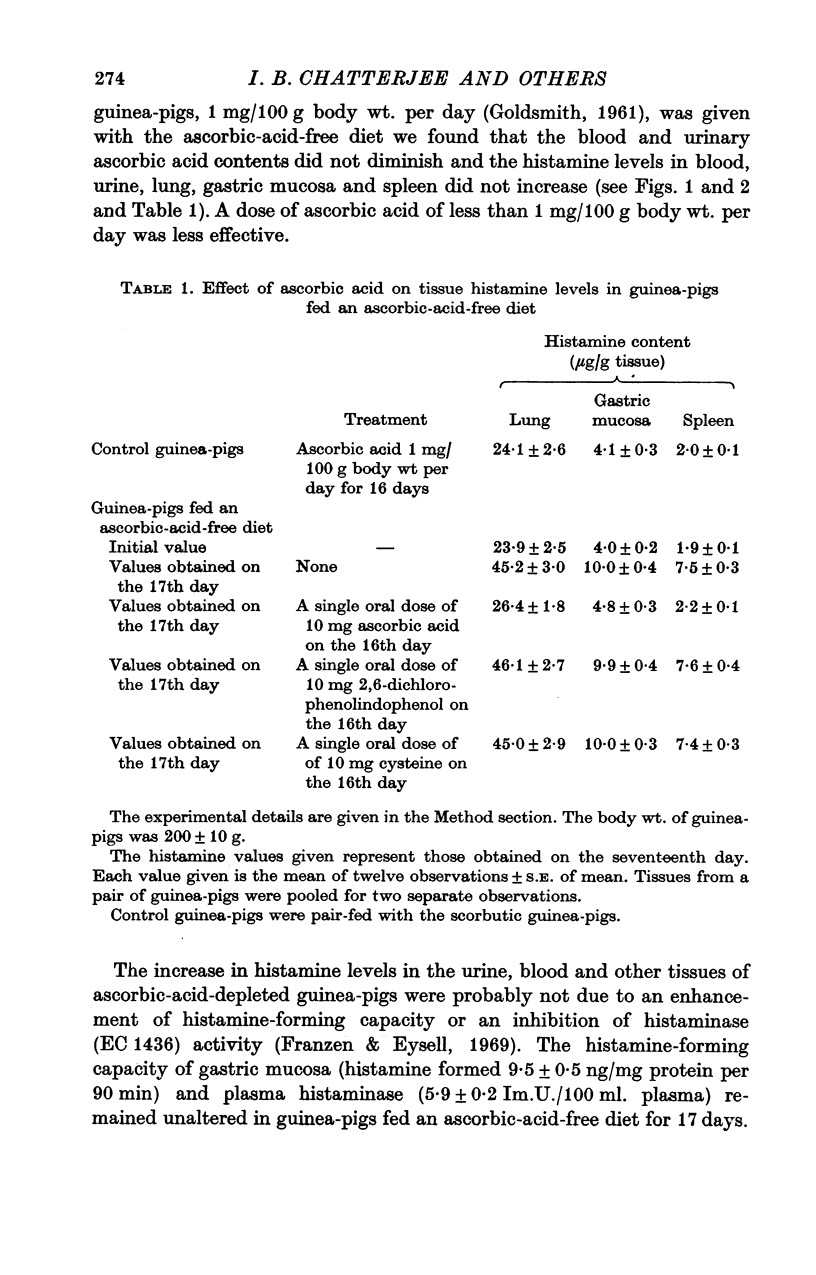
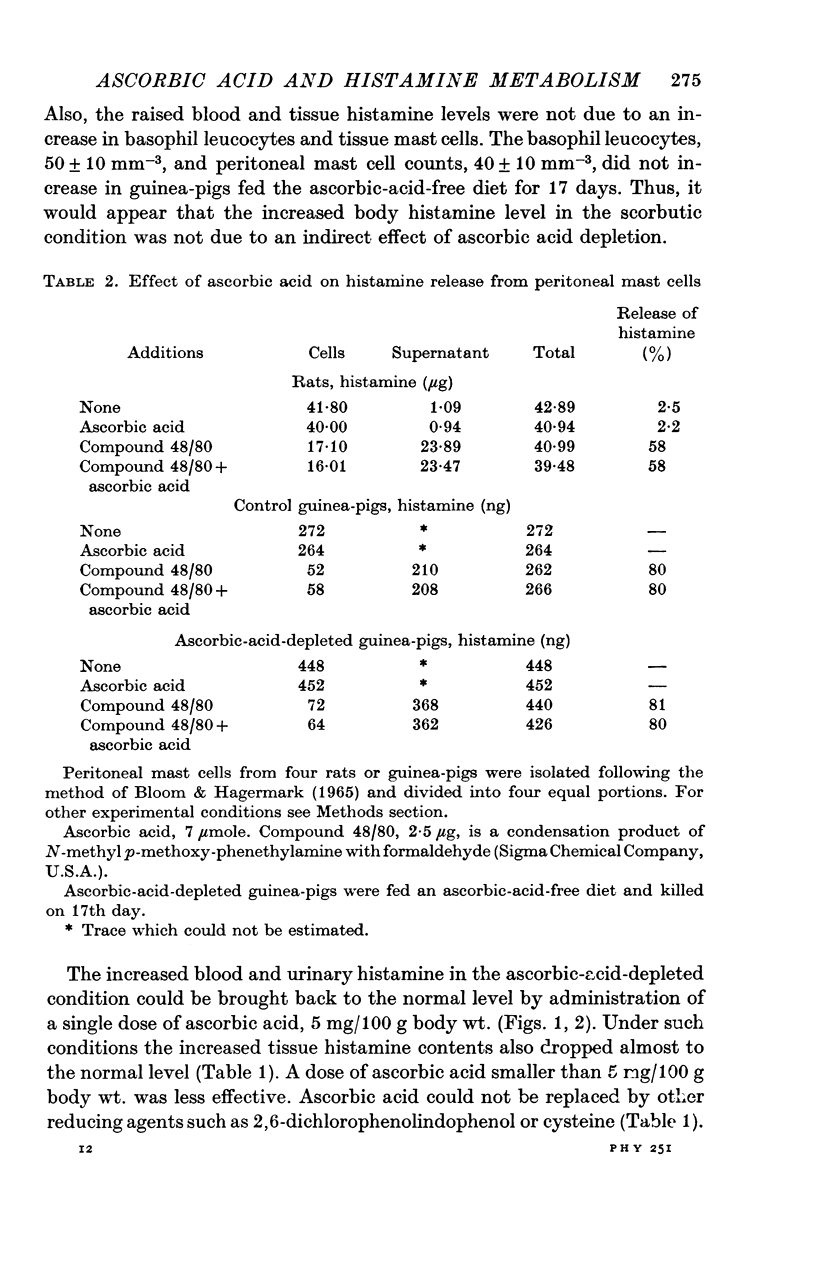
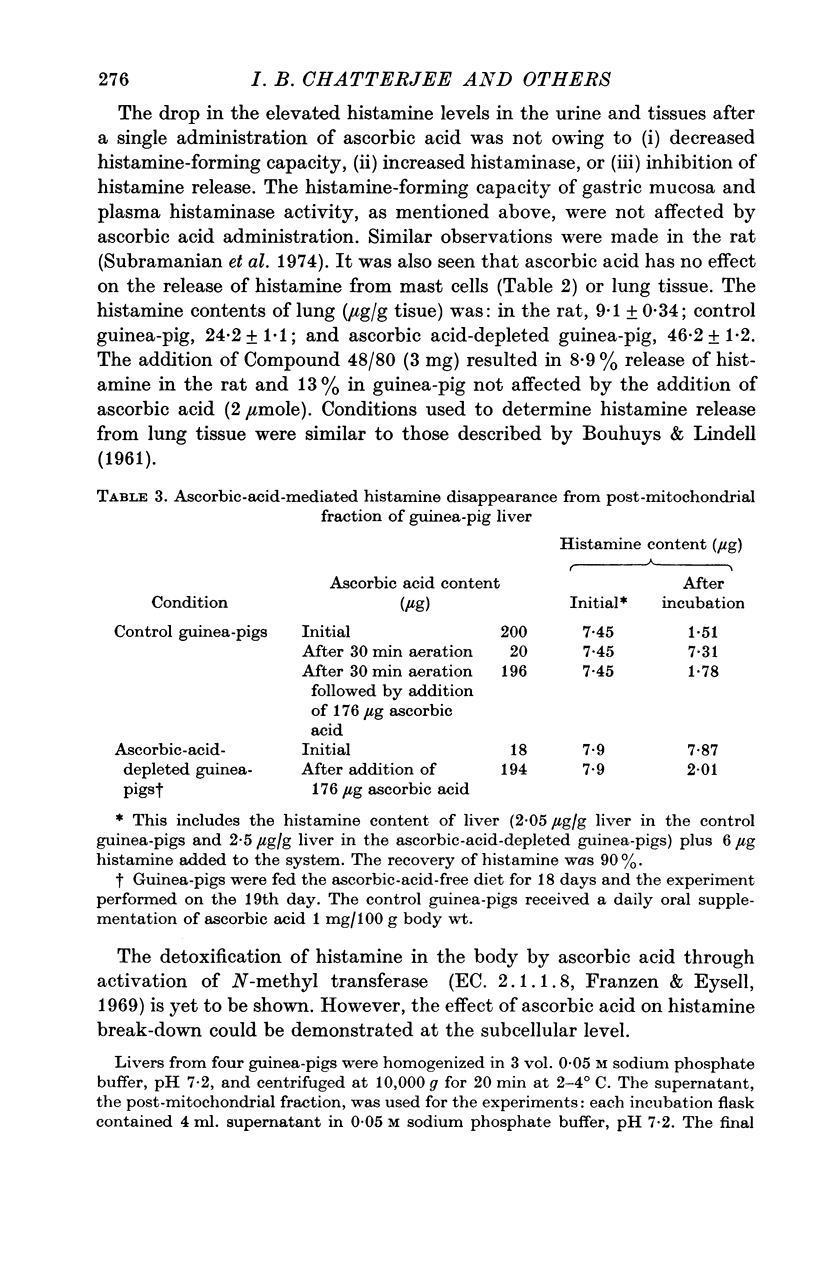
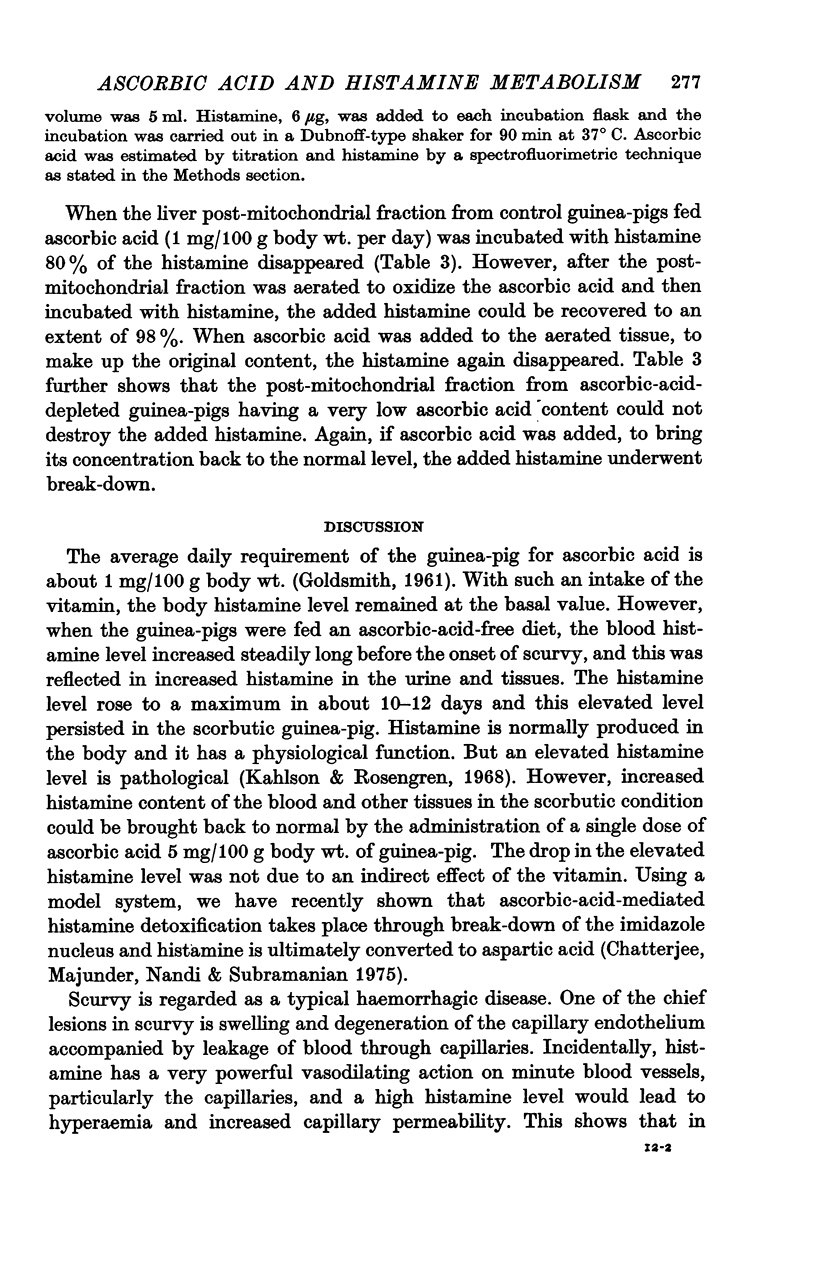


Selected References
These references are in PubMed. This may not be the complete list of references from this article.
- Bloom G. D., Haegermark O. A study on morphological changes and histamine release induced by compound 48/80 in rat peritoneal mast cells. Exp Cell Res. 1965 Dec;40(3):637–654. doi: 10.1016/0014-4827(65)90241-7. [DOI] [PubMed] [Google Scholar]
- Cooper J. R., Cruickshank C. N. Improved method for direct counting of basophil leucocytes. J Clin Pathol. 1966 Jul;19(4):402–402. doi: 10.1136/jcp.19.4.402. [DOI] [PMC free article] [PubMed] [Google Scholar]
- DAWSON W., WEST G. B. THE INFLUENCE OF ASCORBIC ACID ON HISTAMINE METABOLISM IN GUINEA-PIGS. Br J Pharmacol Chemother. 1965 Jun;24:725–734. doi: 10.1111/j.1476-5381.1965.tb01628.x. [DOI] [PMC free article] [PubMed] [Google Scholar]
- Kahlson G., Rosengren E. New approaches to the physiology of histamine. Physiol Rev. 1968 Jan;48(1):155–196. doi: 10.1152/physrev.1968.48.1.155. [DOI] [PubMed] [Google Scholar]
- Nandi B. K., Subramanian N., Majumder A. K., Chatterjee I. B. Effect of ascorbic acid on detoxification of histamine under stress conditions. Biochem Pharmacol. 1974 Feb 1;23(3):643–647. doi: 10.1016/0006-2952(74)90629-7. [DOI] [PubMed] [Google Scholar]
- PARRATT J. R., WEST G. B. 5-Hydroxytryptamine and tissue mast cells. J Physiol. 1957 Jul 11;137(2):169–178. doi: 10.1113/jphysiol.1957.sp005804. [DOI] [PMC free article] [PubMed] [Google Scholar]
- Petillo J. J., Gulbenkian A., Tabachnick I. I. Effects in vivo and in vitro of nonsteroidal anti-inflammatory drugs on (rat stomach) histidine decarboxylase. Biochem Pharmacol. 1969 Jul;18(7):1784–1788. doi: 10.1016/0006-2952(69)90172-5. [DOI] [PubMed] [Google Scholar]
- Subramanian N., Nandi B. K., Majumder A. K., Chatterjee I. B. Effect of ascorbic acid on detoxification of histamine in rats and guinea pigs under drug treated conditions. Biochem Pharmacol. 1974 Feb 1;23(3):637–641. doi: 10.1016/0006-2952(74)90628-5. [DOI] [PubMed] [Google Scholar]
- Subramanian N., Nandi B. K., Majumder A. K., Chatterjee I. B. Role of L-ascorbic acid on detoxification of histamine. Biochem Pharmacol. 1973 Jul 1;22(13):1671–1673. doi: 10.1016/0006-2952(73)90036-1. [DOI] [PubMed] [Google Scholar]


